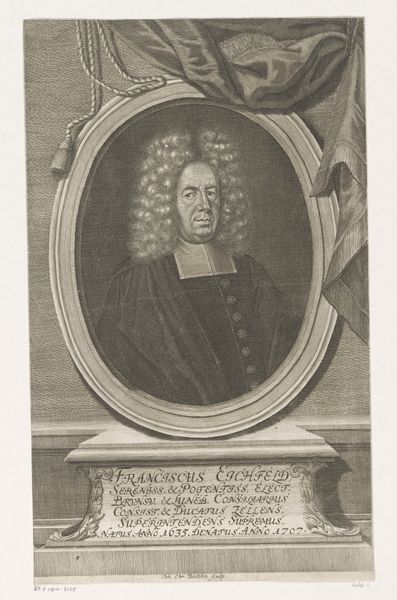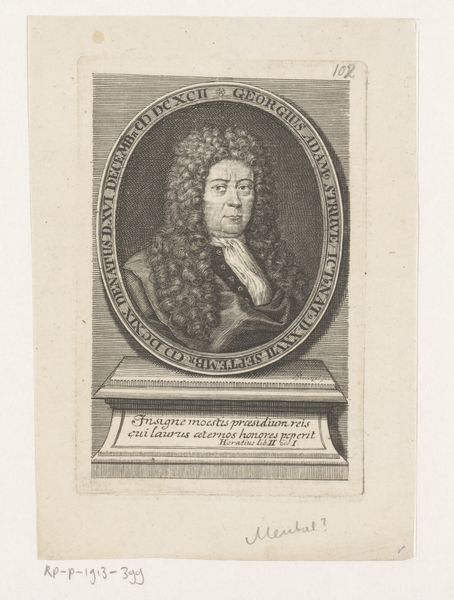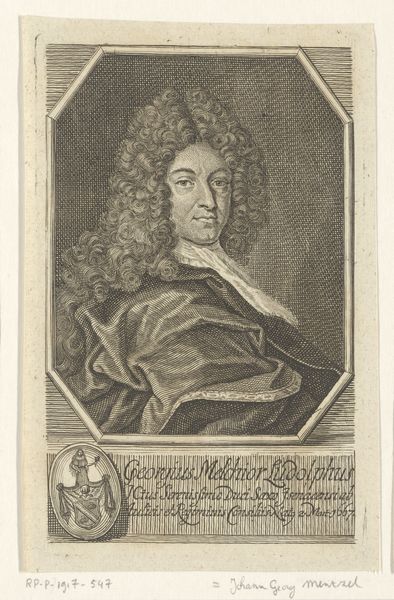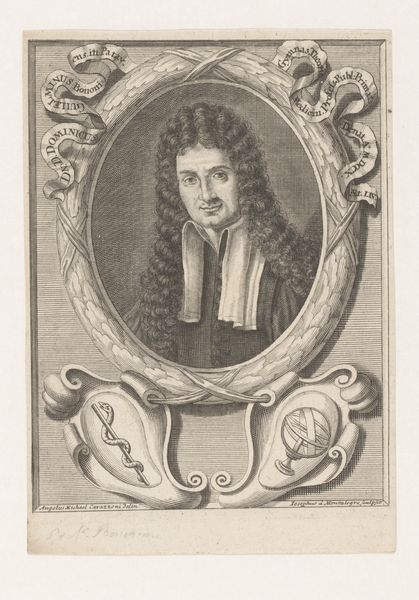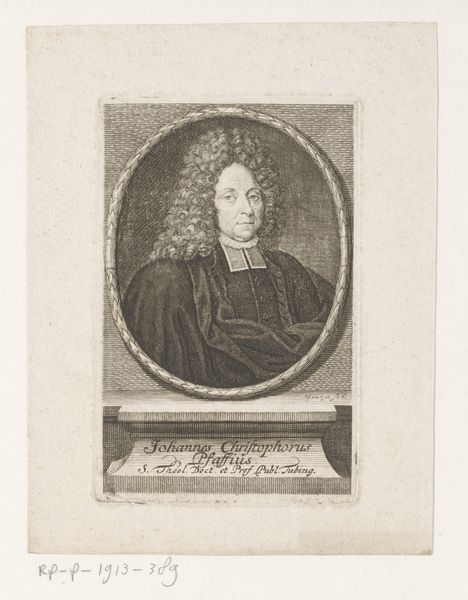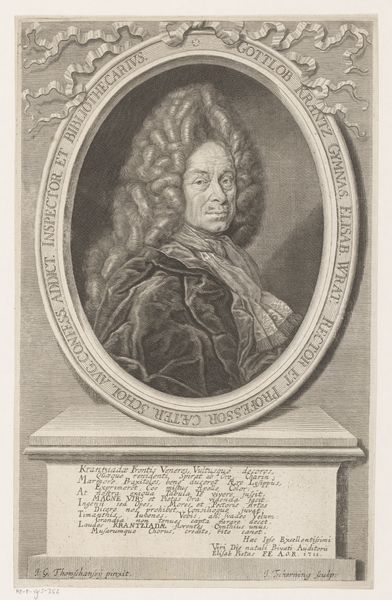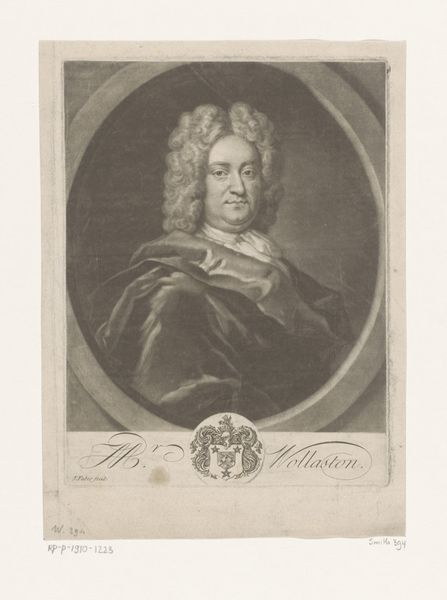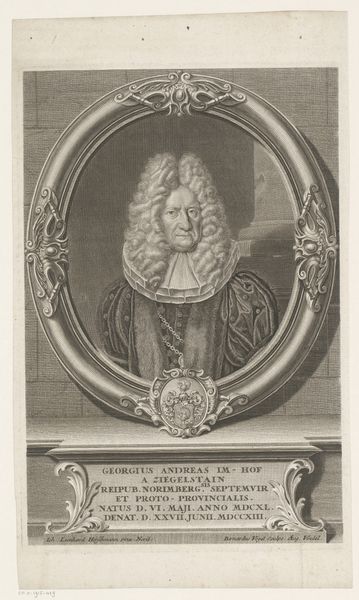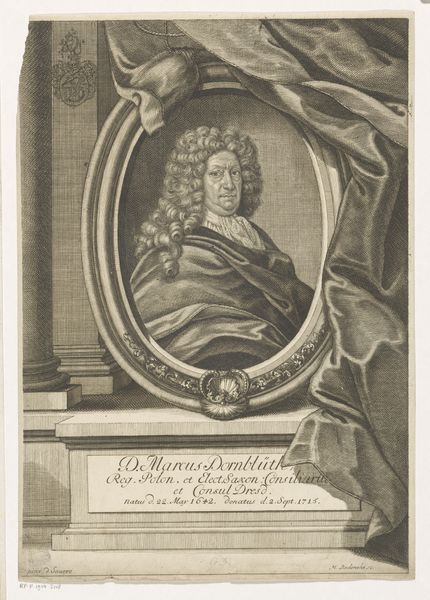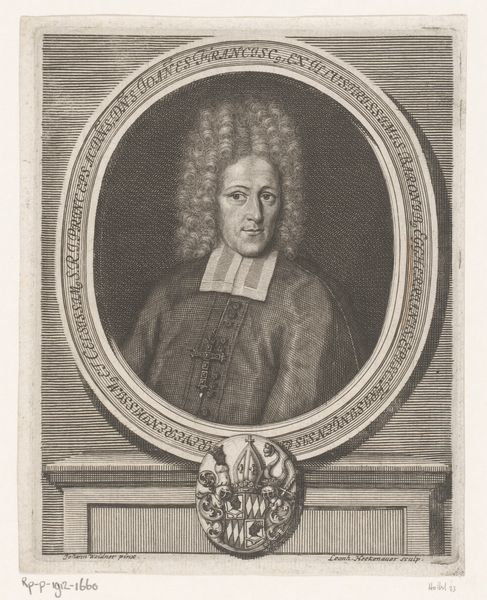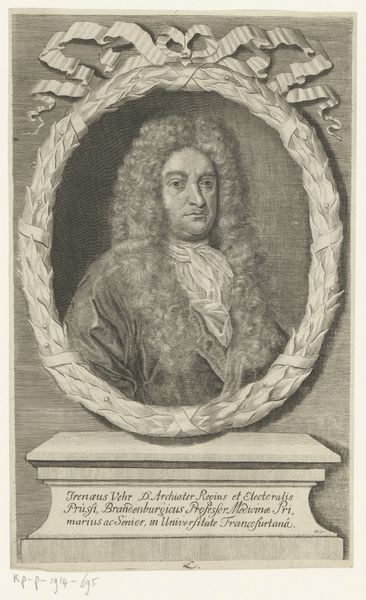
Dimensions: height 190 mm, width 116 mm
Copyright: Rijks Museum: Open Domain
Editor: Here we have Johann Friedrich Schleuen’s “Portret van William Burkitt,” created sometime between 1749 and 1784. It's an engraving, and something about the rigid formality feels so characteristic of its time. What catches your eye? Curator: It’s fascinating how the visual language speaks to inherited status and piety. The ornate frame surrounding Burkitt's image – notice the cartouche displaying his coat of arms – it serves to amplify his social standing, rooting him within a lineage. Doesn't the very presence of that heraldic symbol suggest more than just individual identity? Editor: Absolutely, it speaks to generations and the weight of family history. The tight framing feels restrictive, but do you think that the visual symbols contribute to the portrait's meaning? Curator: Without a doubt. The clerical garb signifies not just religious affiliation but a specific role within the community, and the oval frame evokes classical cameos of nobility. Every element reinforces Burkitt's established place in society, doesn’t it? It invites reflection upon what these symbols meant to viewers then, and perhaps even what persists in our understanding of power structures today. How might such imagery have affected those outside of that societal circle, do you think? Editor: That's an insightful question. It's a stark reminder of the divides that were so deeply ingrained, creating a visual hierarchy that reinforces societal norms. This has given me a new perspective on how portraits functioned as more than just likenesses. Curator: Indeed. By understanding the visual grammar employed, we begin to understand what truly “speaks” through time. Editor: This really illuminates the cultural significance of portraiture and symbolism of social power. Thank you for your insights!
Comments
No comments
Be the first to comment and join the conversation on the ultimate creative platform.
